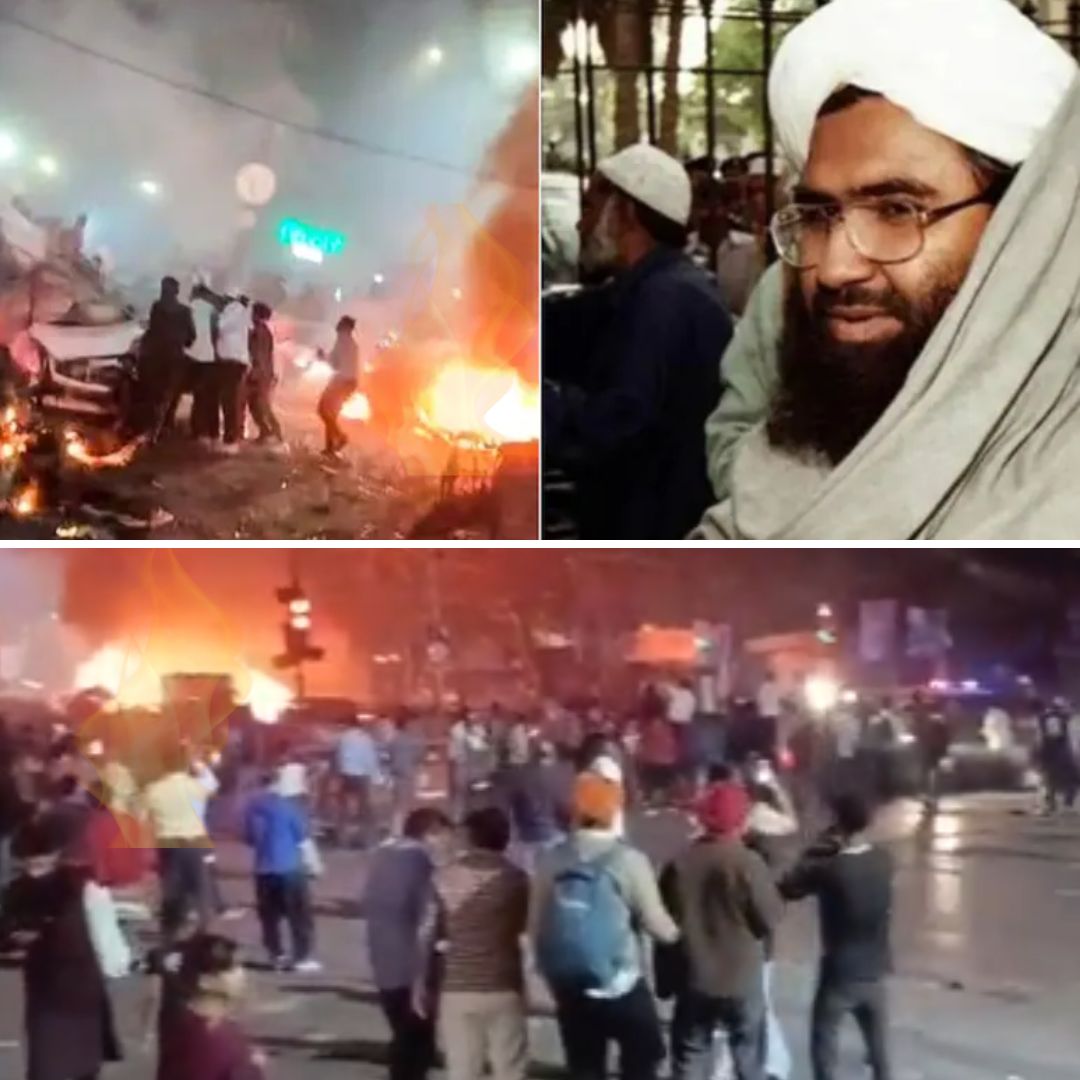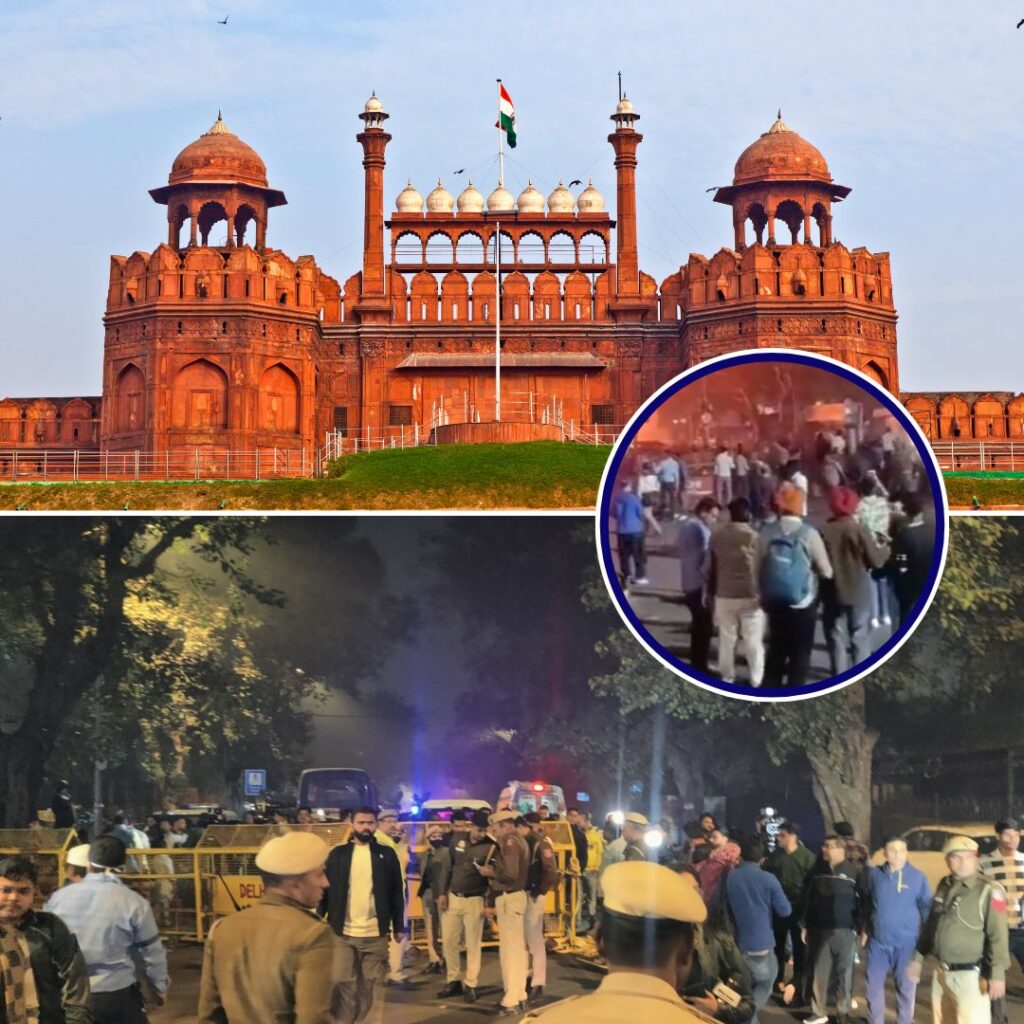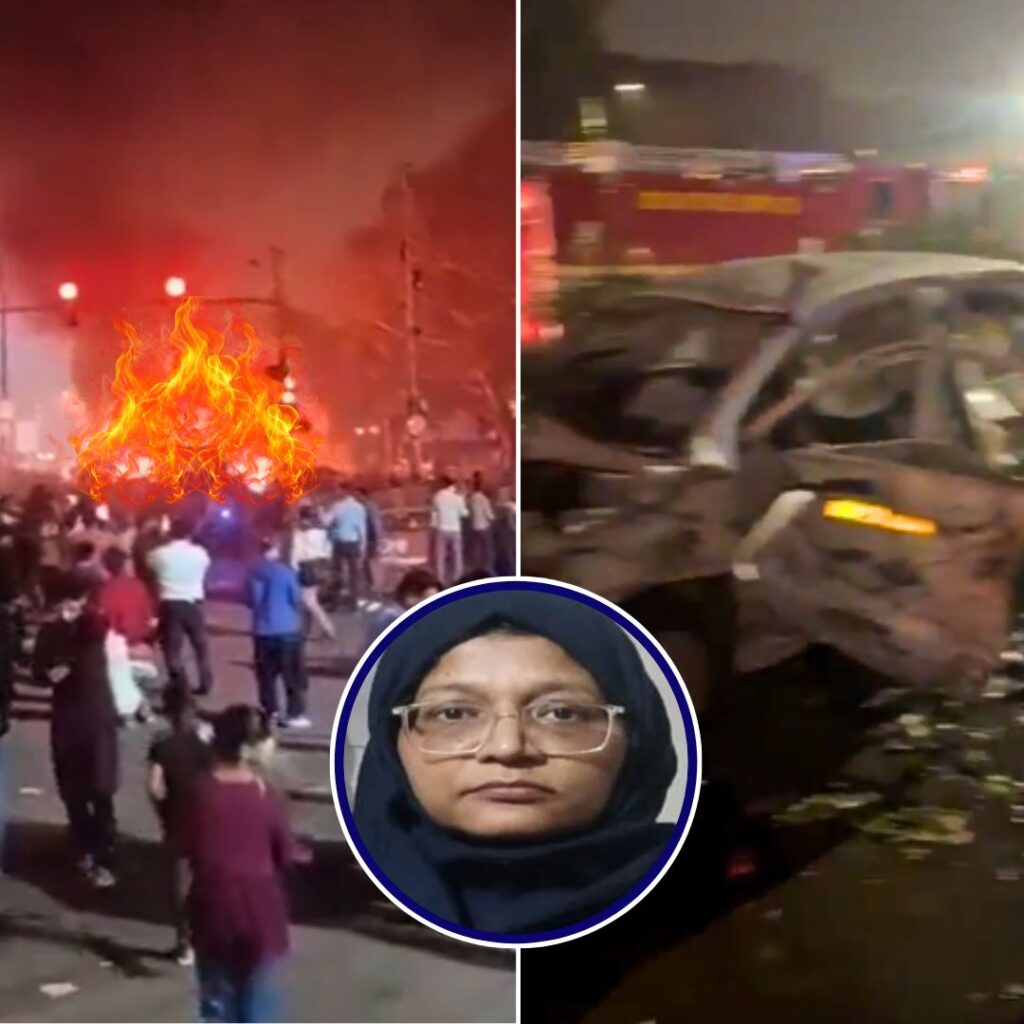A devastating car explosion near Delhi’s Red Fort Metro Station on 10 November has killed at least eight people and injured over 20. According to media reports (NDTV), the investigators now believe it was a terror attack linked to Pakistan-based Jaish-e-Mohammed (JeM) founder Masood Azhar and his sister Sadiya Azhar.
Officials say Sadiya, who allegedly leads JeM’s newly formed women’s wing, Jamaat-ul-Mominaat, may have coordinated the operation from across the border.
The National Investigation Agency (NIA) has taken over the probe after police recovered over 2,900 kg of explosives from a nearby Faridabad safehouse days before the blast.
Home Minister Amit Shah said the investigation is being pursued “with full intensity,” adding that “all possibilities, including cross-border terror links, are being examined.”
Blast in The Heart of Delhi, Suspected Terror Link Surfaces
At about 6.52 pm on 10 November, a slow-moving Hyundai i20 came to a stop at the traffic signal near Subhash Marg, just outside the Red Fort metro station. Seconds later it exploded, triggering a fire that engulfed at least six cars, two e-rickshaws and an autorickshaw, shattered nearby windows and sent shock-waves through the crowded Old Delhi area.
The blast has claimed eight confirmed lives so far and injured around 20. Investigators have registered a case under the Unlawful Activities (Prevention) Act (UAPA), the Explosives Act and relevant sections of the Indian Penal Code.
As part of the probe, agencies say the car had changed hands several times: it was registered in Gurugram by a Salman, sold to a Tariq from Pulwama, then to one Amir and finally to Dr Umar Mohammad, a Kashmiri doctor suspected to be part of the plot.
In addition, on 9 November a major raid in Faridabad uncovered approximately 2,900 kg of ammonium-nitrate and other bomb-making materials, rifles, pistols and timers – raising fears of a major coordinated attack.
According to Delhi Police, the investigation is probing whether this was a suicide VBIED attack akin to the tactics used by JeM.
During a media briefing, Home Minister Amit Shah remarked:
“We are taking all possibilities into account… the investigation is on with full intensity.”
These developments have raised alarm across the capital and beyond. A source in the probe described the group behind the blast as a “white-collar terror ecosystem” involving professionals – doctors, academics, students – in coordination with foreign handlers.
Re-emergence of JeM’s Women’s Wing and Motive Behind the Strike
Investigative agencies now believe the strike may be either a revenge attack or a revival effort by JeM after significant losses in its leadership and infrastructure. The group lost around ten of Masood Azhar’s family members in India’s “Operation Sindoor” in May 2025, including Sadiya’s husband, Yusuf Azhar.
In the aftermath, JeM reportedly set up a female recruitment unit named Jamaat‑ul‑Mominaat, and assigned Sadiya Azhar to lead it from Pakistan, with the aim of tapping women for radical recruitment and logistical support.
Sources say Dr Shaheena Shahid, a Lucknow-based doctor, has been arrested and is believed to have played a key role in this women’s wing, recruiting women in India, in liaison with Sadiya Azhar.
Her car was found to contain arms and ammunition, linking her to the wider network. In parallel, Dr Muzammil Ahmad Ganaie (Pulwama) and Dr Adil Ahmad Rather (Anantnag) were also arrested in the Faridabad module raid.
While the official probe has not yet formally confirmed JeM’s direct operational role in the Delhi blast, the pattern of explosion — a VBIED loaded with ANFO (ammonium-nitrate fuel oil) in a slow-moving car — strongly mirrors JeM’s prior tactics, including the 2019 Pulwama attack.
A senior source said the blast may have been triggered by Dr Umar Mohammad after alarm bells rang on his network following the Faridabad arrests.
Security agencies further indicate that the vehicle’s movement, the explosive load, and the multiple prior ownership transfers all point to a pre-planned terror strike rather than an accident or CNG cylinder blast.
Why it Matters: Implications for Security, Terror Strategy & Diplomacy
The blast in such a heavily guarded space in the heart of India’s capital highlights a potential shift in militant strategy: from remote or border theatres to the urban public sphere, leveraging domestic professional networks and female recruitment.
The seizure of nearly 2.9 tonnes of explosive material in a coordinated raid suggests higher scale ambitions.
From a security viewpoint, the attack has triggered high-alert status in Delhi, Uttar Pradesh, Haryana and other major states. The NIA and Delhi Police have mobilised forensic, FSL and anti-terror squads.
Union Home Secretary is coordinating state-centre responses. Foreign missions (US, UK, EU) have also extended condolences and issued advisories.
Diplomatically, if the probe confirms backing from Pakistan or Pakistan-based handlers, India may raise the issue at multilateral levels and revisit counter-terror pressures. From a counter-terror-strategy lens, the emergence of a women’s wing designed by JeM signals a dangerous evolution-women professionals and academics entering radical recruitment and logistical roles.
Observers say response must combine robust policing with community vigilance, deradicalisation efforts and social resilience.
For India’s civil society, the incident underscores how terror can adapt: the actor might not be the classic militant, but a doctor or student. It also raises questions about how urban hubs and public spaces remain vulnerable, even amid layered security.
The Logical Indian’s Perspective
The killing of civilians in a public space is a painful reminder of the fragility of security and the need for constant vigilance.
At The Logical Indian, we believe that while intelligence and law-enforcement must be razor-sharp in response, the long-term antidote to terror lies in strengthening pluralism, empathy and shared humanity.












